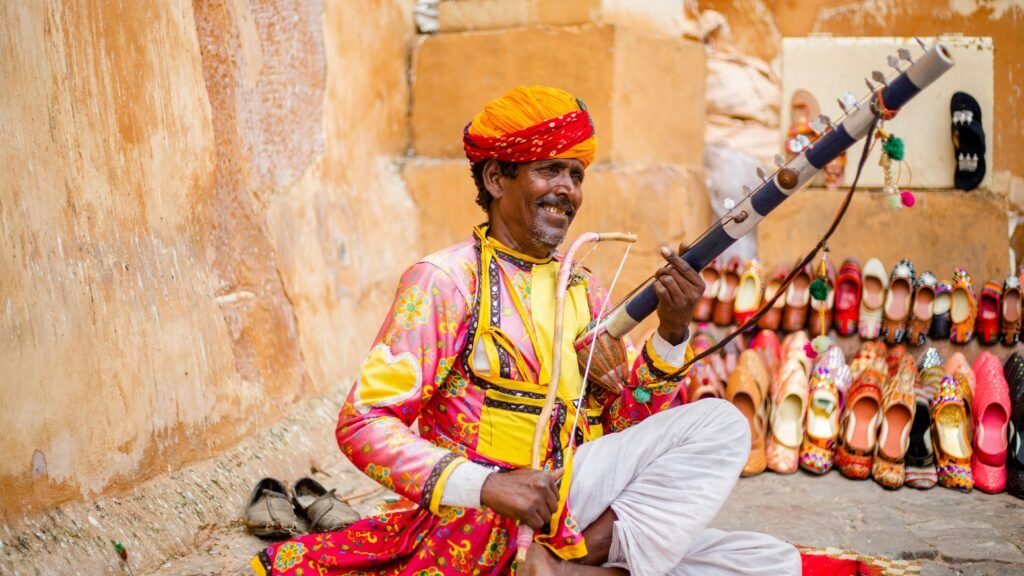Traditional music and dance are vibrant expressions of culture that have been passed down through generations across the world. These art forms offer a unique window into the history, values, and everyday lives of communities, connecting people to their roots and to each other. In this article, we’ll take a journey across continents to explore a diverse array of traditional music and dance styles, uncovering the stories they tell and the rhythms that continue to inspire. Whether you’re a casual listener or a cultural enthusiast, this exploration promises to enrich your understanding of the world’s rich artistic heritage.
Table of Contents
- The Cultural Roots of Traditional Music and Dance
- Distinctive Instruments and Movements That Define Regions
- How Traditional Performances Influence Modern Art Forms
- Top Destinations to Experience Authentic Music and Dance Festivals
- Concluding Remarks
The Cultural Roots of Traditional Music and Dance
From the rhythmic beats of the African djembe to the graceful movements of the Andean pan flute, traditional music and dance are deeply woven into the fabric of cultural identity. These art forms serve as living archives, preserving ancient stories, beliefs, and social values passed down through generations. In many communities, music and dance are not mere entertainment but vital rituals that mark significant life events such as births, weddings, and harvest celebrations. The blend of indigenous instruments, melodies, and choreographies speaks volumes about a people’s history, environment, and spiritual connection to the world around them.
Elements central to these cultural expressions often include:
- Improvised rhythms created with native materials and instruments
- Storytelling conveyed through symbolic gestures and movements
- Integration of communal participation, encouraging inclusivity and shared experience
- The cyclical nature of many dances that mirror natural and cosmic cycles
As we immerse ourselves in these traditions, it becomes clear that traditional music and dance are much more than performances; they are dynamic living traditions connecting past to present, reinforcing community bonds, and fostering a sense of belonging that transcends time and geography.
Distinctive Instruments and Movements That Define Regions
Across the world, traditional music and dance are wonderfully diverse, each region distinguished by unique instruments and expressive movements that embody the local culture. In South America, for example, the charango—a small, guitar-like string instrument crafted from the shell of an armadillo—creates bright, lively melodies that accompany spirited dances like the cueca. Meanwhile, in West Africa, the pulsating rhythms of djembe drums are inseparable from energetic dances that engage the whole community, serving both as a social event and a spiritual expression. These instruments are not just tools for music; they are physical extensions of history and identity, often handcrafted and passed down through generations.
Distinctive regional movements further amplify the emotion and stories told through traditional performances. In Eastern Europe, the intricate footwork of folk dances like the Hungarian csárdás or the Polish polka showcases agility and communal joy, often performed at festivals and weddings. Over in Asia, the graceful, deliberate gestures of the Indian classical dance forms convey mythological tales and deep symbolism, performed alongside instruments such as the sitar and tabla, which provide a melodic foundation. These combinations of instrument and movement create a vivid tapestry of sound and motion, reflecting the values and spirit of their homelands.
- South America: Charango, Cueca dance
- West Africa: Djembe drums, Circle dances
- Eastern Europe: Folk dances like Csárdás and Polka
- Asia: Sitar, Tabla, Classical dance forms
How Traditional Performances Influence Modern Art Forms
Traditional performances serve as a rich wellspring of inspiration for contemporary artists, blending time-honored techniques with modern creativity. Elements such as rhythmic patterns, storytelling methods, and the use of symbolic costumes are often reimagined in contemporary music and dance, creating a vibrant dialogue between past and present. Artists today draw on these traditions to imbue their work with a distinct cultural identity, fostering a sense of continuity and innovation simultaneously. This fusion not only honors ancestral legacies but also pushes the boundaries of artistic expression, making ancient art forms relevant in a modern context.
Several aspects of traditional performances notably shape modern art forms, including:
- Rhythm and Movement: Traditional dance forms influence choreography in contemporary styles, layering complex footwork and gestures into new performances.
- Storytelling Techniques: The narrative structures and mythologies from classical performances enrich modern stage productions and music videos.
- Visual Aesthetics: Costume designs and body adornments from cultural rituals find fresh interpretations in fashion and visual art.
By intertwining ancestral narratives and aesthetics with new technologies and methods, today’s artists build bridges that connect generations, fostering a deeper appreciation of cultural diversity in the global arts scene.
Top Destinations to Experience Authentic Music and Dance Festivals
For travelers seeking immersive experiences, certain festivals stand out as vibrant hubs of cultural expression. In Spain, La Feria de Abril in Seville bursts with flamenco music, colorful traditional dresses, and lively dance floors that invite everyone to participate in the celebration of Andalusian heritage. Meanwhile, the Gnaoua World Music Festival in Morocco offers an extraordinary blend of ancient spiritual music, trance rhythms, and dance rooted in the diverse history of the region. These events are more than performances—they are communal gatherings that preserve and breathe new life into local traditions.
Moving east, Japan’s Awa Odori Festival captivates audiences with its unique dance style performed by thousands of dancers in coordinated movements, dressed in yukatas and straw hats. Similarly, in the heart of Brazil, the Festival de Parintins showcases an epic face-off of folklore through music and dance, celebrating indigenous myths and Amazonian culture with unbeatable passion. Whether you’re drawn to the hypnotic drumbeats of Africa or the soulful tunes echoing through the Balkans, these festivals offer an authentic connection to the world’s diverse cultural tapestry.
- Spain: La Feria de Abril – Flamenco extravaganza
- Morocco: Gnaoua World Music Festival – Spiritual music and trance
- Japan: Awa Odori Festival – Traditional dance spectacle
- Brazil: Festival de Parintins – Folklore celebration
Concluding Remarks
As we’ve seen, traditional music and dance offer a captivating window into the rich cultural tapestries that define communities around the world. Whether it’s the rhythmic drumming of West Africa, the graceful movements of classical Indian dance, or the vibrant storytelling of Latin American folk songs, these art forms carry the history, values, and spirit of their people. Exploring them not only deepens our appreciation for cultural diversity but also reminds us of the universal language of rhythm and movement that connects us all. So next time you encounter a traditional performance, take a moment to listen, watch, and experience the stories being shared—there’s always something new to discover.
Related Products
-
Cabeau Travel Neck Pillow for Airplanes – The Neck…
Travel $49.99 -
Sale!
Dot&Dot Twist Memory Foam Kids Travel Pillow for A…
Travel Original price was: $31.99.$24.99Current price is: $24.99. -
Rewondah Inflatable Travel Pillow for Sleeping Air…
Travel $12.96

